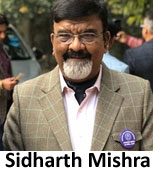In the medieval times one of the early Sultans to have ruled Delhi, though briefly, was Nasiruddin Mahmud. Historical texts refer to a very interesting fact about how an announcement was made regarding his entry into the court. It would be said, “The rule of the Lord of the world extends from Delhi to Palam.” It’s time that the residents of the 10 Janpath realised if they were in close race with Mahmud.
This comparison was necessitated as Mahmud failed to realise his actual worth and continued to live life, to use much clichéd expression, kingsize. The Nehru-Gandhi family in behaving in similar manner is causing harm to their cause than adding any value to their charisma.
On April 14, Prime Minister Narendra Modi inaugurated on the premises of the Nehru Memorial Museum and Library a museum in the memory of every other Prime Minister. Invitations were sent out to the relatives of all the living former Prime Ministers and the next of kin of late former Prime Ministers.
The Nehru-Gandhi family members, who draw their legacy from three Prime Ministers – Jawaharlal Nehru, Indira Gandhi and Rajiv Gandhi, chose not to attend, for reasons not really known to anybody. Dr Manmohan Singh, the last Prime Minister given by the Congress could not attend due to ill health.



